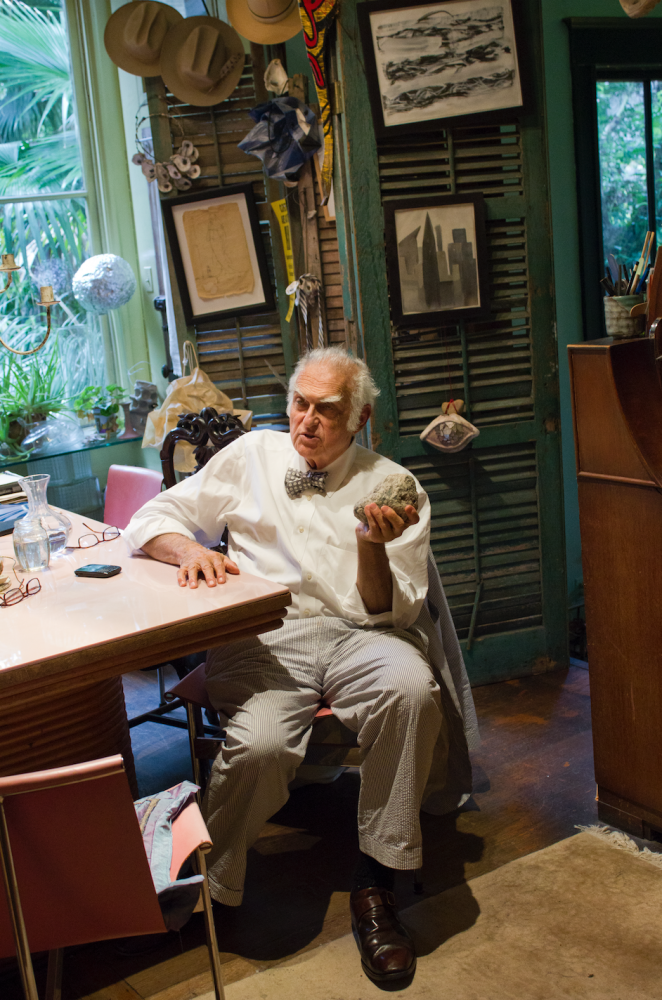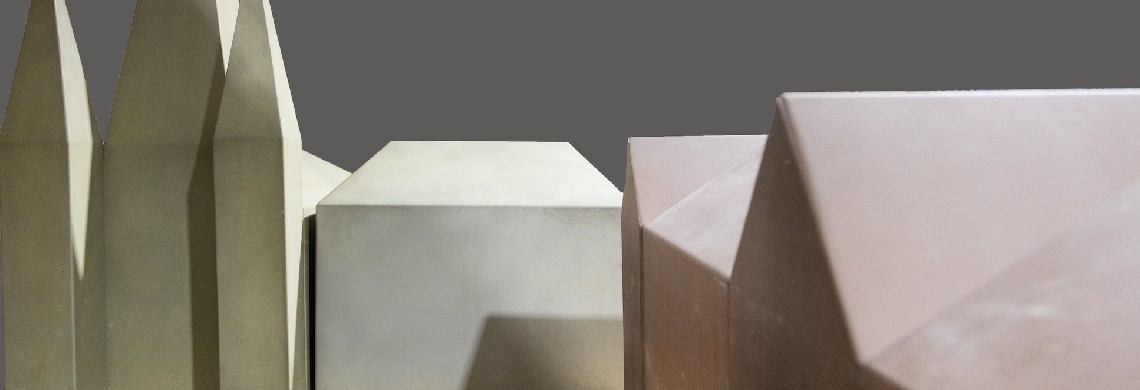This summer and fall, visitors to THNOC’s Tricentennial Wing can see New Orleans’s famed Jackson Square without ever leaving the building.
A new installation in the third-floor Laura Simon Nelson Gallery features Jackson Square, a multicomponent sculpture by New Orleans artist and urban planner Robert Tannen. The artwork comprises abstract representations of all the structures surrounding the square—the Pontalba buildings, Cabildo, Presbytère, and St. Louis Cathedral—as well as the riverfront levee and the square’s statue of Andrew Jackson.

The entire Jackson Square sculpture has a footprint of 10-by-12 feet, and the tallest structure, St. Louis Cathedral, stands 5 feet tall. (THNOC, acquisition made possible by David B. Workman and the Clarisse Claiborne Grima Fund, 2020.0168)
Tannen originally created the sculpture in 1982 as a commission for Pan-American Life Insurance Co., two years after the opening of the Pan-American Life Center at 601 Poydras Street. “They commissioned a number of works primarily by Louisiana artists,” Tannen said. Made of aluminum and weathering steel and fabricated from Tannen’s design by the French Quarter–based firm Holzer Sheet Metal Works, Jackson Square sat in a large public space on the building’s 11th floor, near its cafeteria and dining area.
“The idea was to create a three-dimensional model of Jackson Square, which I have always believed is one of the great urban spaces of the world—not just the United States, but the world—and including the levee, the surrounding landscape,” said Tannen. “I’ve always enjoyed going there and having a muffuletta sandwich ever since I moved to New Orleans 50-plus years ago.”

The sculpture was originally installed on the 11th floor of the Pan-American Life Center, near the cafeteria and common area. (Photograph courtesy of Robert Tannen and Jeanne P. Nathan)
Tannen, who was born in Brooklyn and worked with the architect and futurist R. Buckminster Fuller in the 1960s, first came to the Gulf Coast to assist in planning-related recovery efforts following 1969’s Hurricane Camille. After circulating in the Experimental-architecture and post-avant-garde scenes in the Northeast, he moved to New Orleans permanently in the 1970s. An artist of many media, Tannen frequently uses architectural forms and principles to address concepts related to Louisiana’s built and natural environments.
At the time of his Pan-American Life commission, “I was focused on making shotguns [houses] and other local forms and abstracting the forms, eliminating the windows, doors, filigree, et cetera. So they were basic sculptural forms, almost geometric forms,” he said.

Tannen, holding a rock at home in his Esplanade Avenue Greek Revival house, has always drawn from both the built and natural environments for his art. (Photograph by Keely Merritt, THNOC head of photography; THNOC, gift of Robert Tannen, MSS 629.50.8)
The entire sculpture has a footprint of about 10-by-12 feet, and the tallest structure, St. Louis Cathedral, stands 5 feet tall. The long levee form serves as a representative and literal retaining wall, forming the fourth side of the titular square and reminding the viewer of the city’s deeply embedded relationship with the river and with water. While the piece is meant to honor the existing layout and design of the square, the statue of Andrew Jackson—a pigeon on his head—is an anomaly: “I’d always been aware of Jackson’s role in the Trail of Tears, so the sculpture as it was done would allow that piece to be moved or removed—just as we are now removing monuments of such controversy,” Tannen said.
Rounding out the installation is a text panel with a QR code linking to more information about the history of Jackson Square and its urban development over time.
“I think of the sculpture as giving appropriate importance to that urban space,” Tannen said. “By abstracting the buildings, it’s a way to convey to someone looking at the space and understanding it as a special urban experience.”












